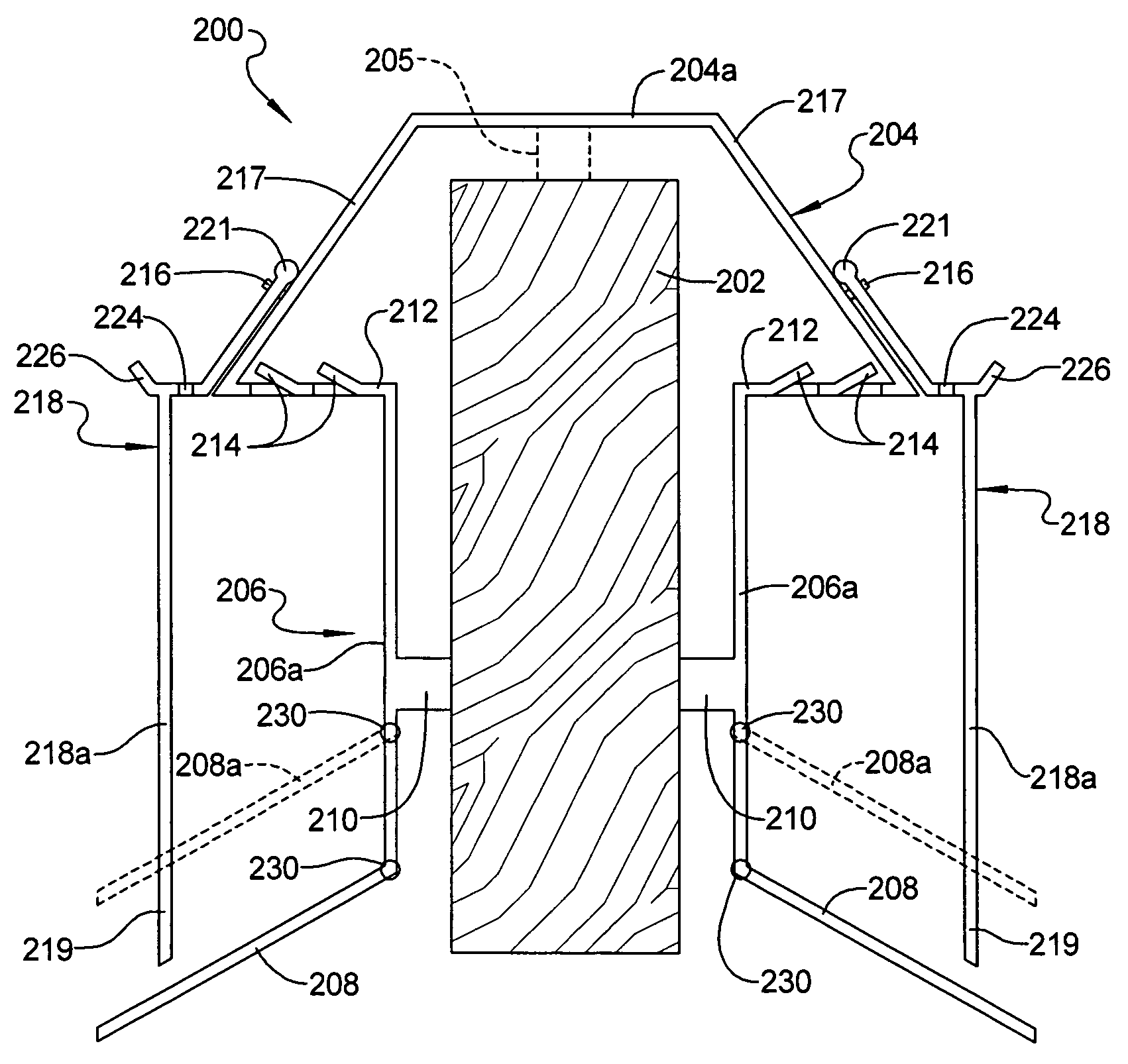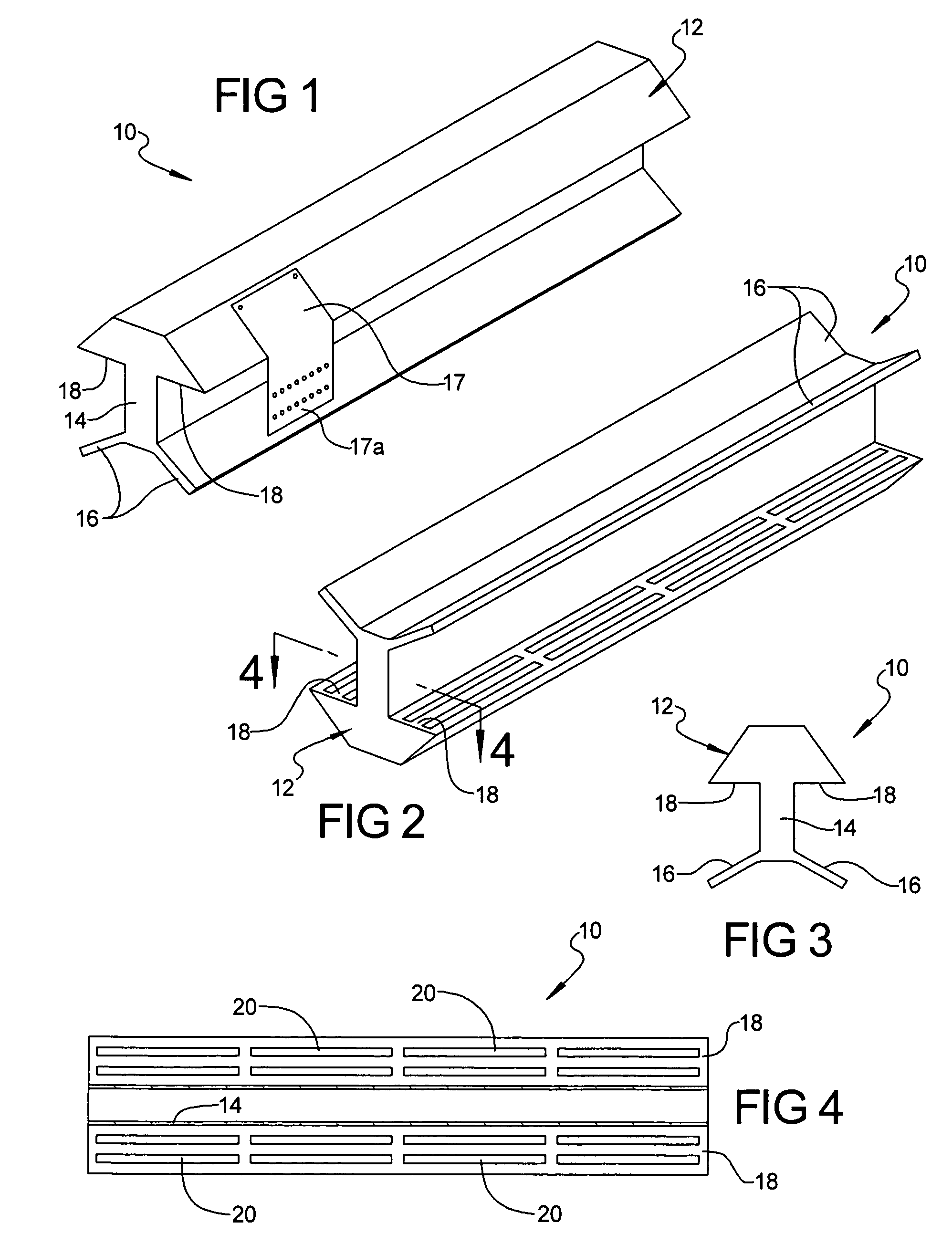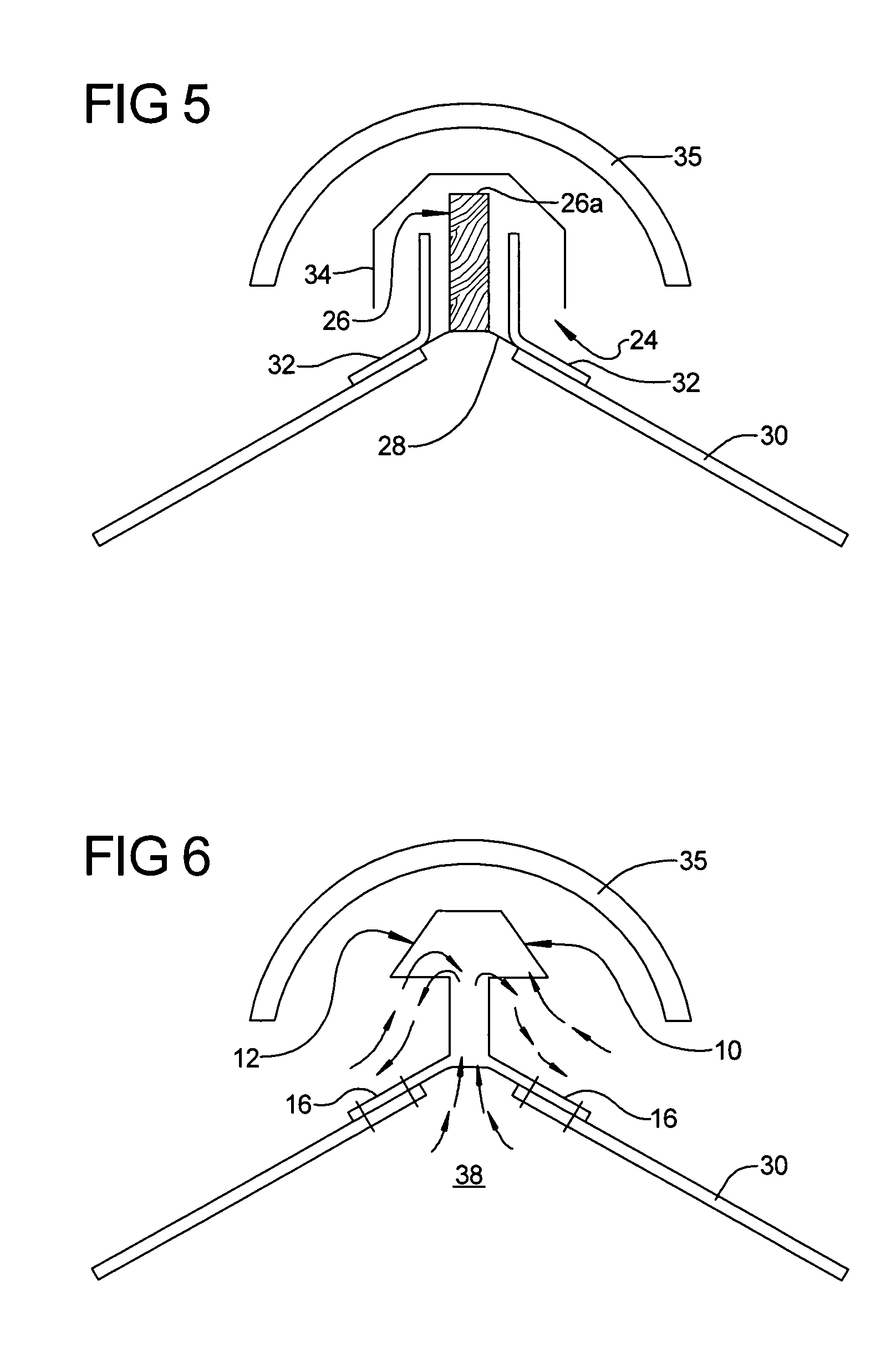Ridge vent for tile roofs
a technology for ridge vents and tile roofs, applied in ventilation systems, lighting and heating apparatus, heating types, etc., can solve the problems of significant additional assembly steps, significant additional costs, and significant increases in time, cost and effort associated with installing ridge vents for tile roofs, and achieves reduced installation time, high strength, and low cost.
- Summary
- Abstract
- Description
- Claims
- Application Information
AI Technical Summary
Benefits of technology
Problems solved by technology
Method used
Image
Examples
Embodiment Construction
[0029]Referring to FIG. 1, there is shown a ridge vent 10 specifically adapted for use with tile roofs. The ridge vent 10 may be made from metal, plastic, aluminum or any other suitable, lightweight material or sheet metal. The ridge vent 10 generally comprises a main body portion 12 forming a hollow area therewithin, a hollow neck portion 14 and a pair of flanges 16 which depend from the neck portion 12 and which flare outwardly away from each other.
[0030]Referring to FIGS. 2 and 3, the main body portion 12 includes a pair of eaves 18 each having a plurality of slots 20 formed therein. While eight slots 20 are shown formed in each eave 18, it will be appreciated that the number of slots could vary significantly depending upon the overall dimensions of the ridge vent 10 or the desired degree of airflow therethrough. Optionally, as shown in FIG. 1, a cover 17 having a plurality of openings 17a could be secured to the main body portion 17 to ensure that the slots 20 are blocked from v...
PUM
 Login to View More
Login to View More Abstract
Description
Claims
Application Information
 Login to View More
Login to View More - R&D
- Intellectual Property
- Life Sciences
- Materials
- Tech Scout
- Unparalleled Data Quality
- Higher Quality Content
- 60% Fewer Hallucinations
Browse by: Latest US Patents, China's latest patents, Technical Efficacy Thesaurus, Application Domain, Technology Topic, Popular Technical Reports.
© 2025 PatSnap. All rights reserved.Legal|Privacy policy|Modern Slavery Act Transparency Statement|Sitemap|About US| Contact US: help@patsnap.com



